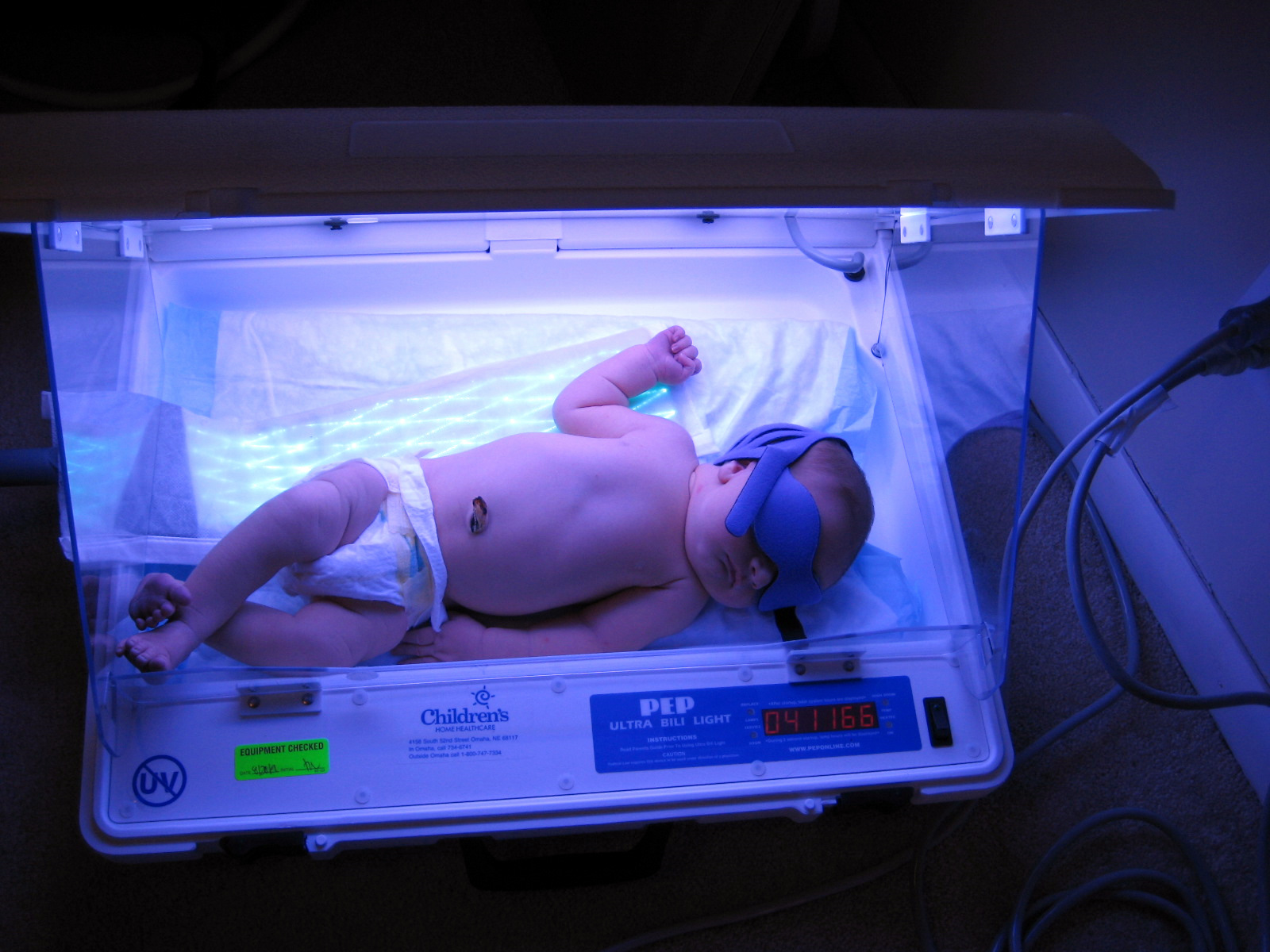Playlist
Show Playlist
Hide Playlist
Neonatal Hyperbilirubinemia (Neonatal Jaundice): Evaluation of a Baby
-
Slides NeonatalHyperbili Pediatrics.pdf
-
Download Lecture Overview
00:01 Okay. 00:01 So let’s say we have this baby and we know all these causes now and we’re trying to figure out how bad is this child. 00:09 Should we intervene or not? The first is a clinical assessment. 00:14 We’re going to press on the skin a little bit to assess the jaundice and see whether it progresses from head down to the limbs. 00:23 The problem is that this technique of understanding that head jaundice happens first, then trunk jaundice, then leg jaundice, may be underestimated on infants with dark skin or in preterm infants who may be worse than they appear based on clinical suspicion. 00:43 It’s important if we see a jaundiced baby and we’re concerned and that takes a little bit of experience to check the bilirubin with either a transcutaneous meter or a frank blood sample. 00:55 Most centers do blood samples. 00:58 Keep in mind the gestation of the baby. 01:01 We’re going to lower our treatment threshold in preterm infants. 01:04 And keep in mind the age of the baby. 01:08 If an infant is less than 24 hours old, this is likely to be hemolysis and could be potentially more serious like DIC. 01:17 If the infant is over two weeks or maybe three weeks if preterm and there’s persistent jaundice, there may be something significant going on. 01:26 Either the child has conjugated hyperbili and you’ve missed it before. 01:30 Or this could be unconjugated and the patient has underlying syndrome such as Crigler-Najjar syndrome or Gilbert syndrome. 01:38 Next, we’re going to look at this baby. Is this baby well or not? If the baby is well-appearing, that’s probably going to be physiologic jaundice rather than sepsis. 01:48 But it’s important to check the clinical evidence of sepsis especially if the child’s dehydrated. 01:55 Next, we’re going to check for risk factors. 01:58 Think about what the mom’s blood type is and the baby’s blood type is. 02:03 Just like with Rh factor that we went through carefully, perhaps the mom is type A and the baby is type B. 02:12 And mom had a type B baby before and now she has anti-B antibodies that have gone into that baby. 02:18 And that baby now has blood group incompatibility causing the child to have significant hemolysis. 02:27 If they’re Mediterranean or Afro-Caribbean, you might think of G6PD and then also think about sepsis, acidosis, low serum albumin, et cetera. 02:38 Lastly, we’re going to plot them. 02:40 We’re going to put them on a graph and say how old they are and how much hyperbili do we tolerate. 02:46 We plot the bilirubin on a gestation’s specific chart according age since birth, in hours or days, and then we plot the change of the bilirubin to identify whether these are potentially high levels. 03:00 So if we plot them and we decide it looks like they need therapy, we’re going to do one of two therapies. 03:06 First, we may light them or second, we may do a full fledged exchange transfusion. 03:13 So who do we light? Breastfed babies are a little bit more likely to be lit up. 03:19 This is because the early breast milk is colostrum and it comes with a very small volume, and these infants do less stooling early in life. 03:29 And remember stooling is how we get it out. 03:32 Also, they may have breast milk jaundice where the milk itself is causing a jaundice, although that’s usually later in life around two weeks of age. 03:41 So if the child meet criteria and fits on this graph, then we will start phototherapy. 03:47 We’ll use the chart to calculate when the light is needed and when we can turn it off. 03:52 It’s basically when they fall below the curve. 03:54 And we’ll recheck bilirubins periodically to make sure the levels are coming down. 03:59 Some people like to get a rebound level or once it comes down, they turn off the light and they check another level in six hours to make sure that child is still doing okay. 04:08 If it’s severely elevated and they’re in the range of danger, we may do an exchange transfusion to prevent kernicterus. 04:16 That is extremely rare to do, but it does happen sometimes. 04:21 So that’s my review of physiologic jaundice and conjugated hyperbilirubinemia in infants during the perinatal period. 04:30 Thanks for your time.
About the Lecture
The lecture Neonatal Hyperbilirubinemia (Neonatal Jaundice): Evaluation of a Baby by Brian Alverson, MD is from the course Neonatology (Newborn Medicine).
Included Quiz Questions
Which of the following therapies is indicated in the event of severely high levels of unconjugated bilirubin?
- Exchange transfusion
- A “bili-blanket” and three lights
- Liver transplant
- Broad-spectrum antibiotics
- Hemodialysis
Customer reviews
5,0 of 5 stars
| 5 Stars |
|
1 |
| 4 Stars |
|
0 |
| 3 Stars |
|
0 |
| 2 Stars |
|
0 |
| 1 Star |
|
0 |
Excellent lecture as usual. It made me more confident to identify the newborns at risk and the possible differential diagnoses. Thanks!




